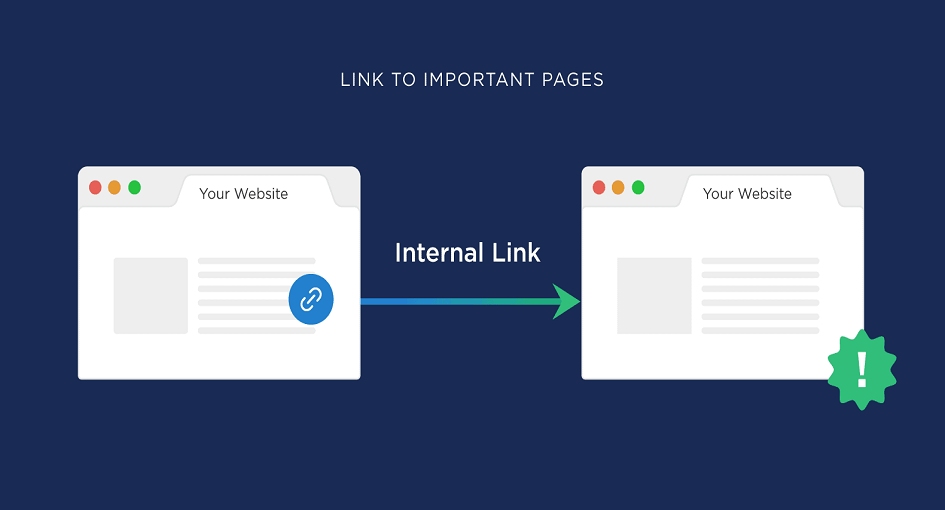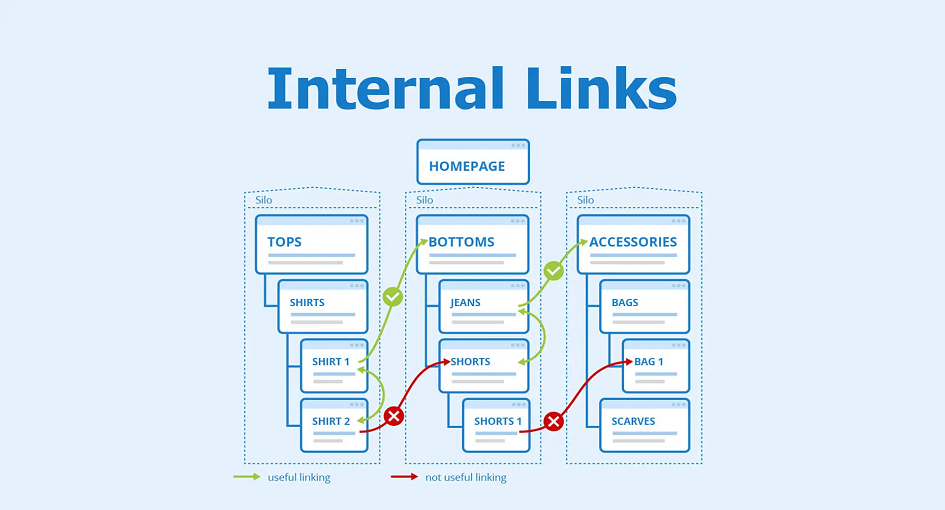
Internal links are a fundamental component of Search Engine Optimization (SEO). They play a crucial role in enhancing the visibility of your website on search engines, improving user experience, and distributing link authority throughout your site. Explore the world of internal links, covering what they are, how they impact SEO, and how to effectively use them to benefit your website.
Links are hyperlinks that connect one page of a website to another page within the same domain. They serve as a navigation tool for both users and search engine crawlers, allowing them to move between different pages on your site easily. Links are distinct from external links, which point to pages on other websites.
Internal links offer several benefits for SEO:

To make the most of links, consider the following best practices:
Links play a crucial role in distributing link equity across your website. Link equity refers to the SEO value or authority that a page can pass to other pages through links. When you link from a high-authority page to another, you’re effectively sharing some of that authority with the linked page. This can influence the ranking potential of the linked page.
Siloing is an organizational method that groups related content together through links. This helps search engines understand the thematic relevance of your content. Silos can improve SEO by making it easier for search engines to identify and rank related content. For instance, an e-commerce site could create silos for different product categories, with links connecting products within the same category.
Breadcrumbs and navigation menus are forms of internal linking that enhance user experience and provide clear paths for users to navigate your website. Breadcrumbs, typically displayed at the top of a page, show the hierarchical structure of the site and allow users to retrace their steps. Navigation menus help users explore different sections of your site easily.

XML sitemaps are lists of all the pages on your website that you want search engines to crawl. While not traditional links, they provide a roadmap for search engine bots to discover and index your pages. Generating and submitting an XML sitemap to search engines is a good practice to ensure all your pages get indexed.
Orphan pages are those that lack links from other pages on your site. These pages can be challenging for search engines to discover, index, and rank. Ensure that all important pages have at least one internal link pointing to them to prevent them from becoming orphans.
Regularly monitor your internal linking structure. Tools like Google Search Console can provide insights into how search engines view your links. Make adjustments as needed to maintain a logical and effective internal linking strategy.
In conclusion, effectively using internal links is essential for SEO success. They not only improve the user experience but also influence how search engines perceive and rank your content. By following best practices, distributing link equity, and creating a logical site structure, you can harness the power of links to enhance your website’s visibility and authority in the digital landscape.